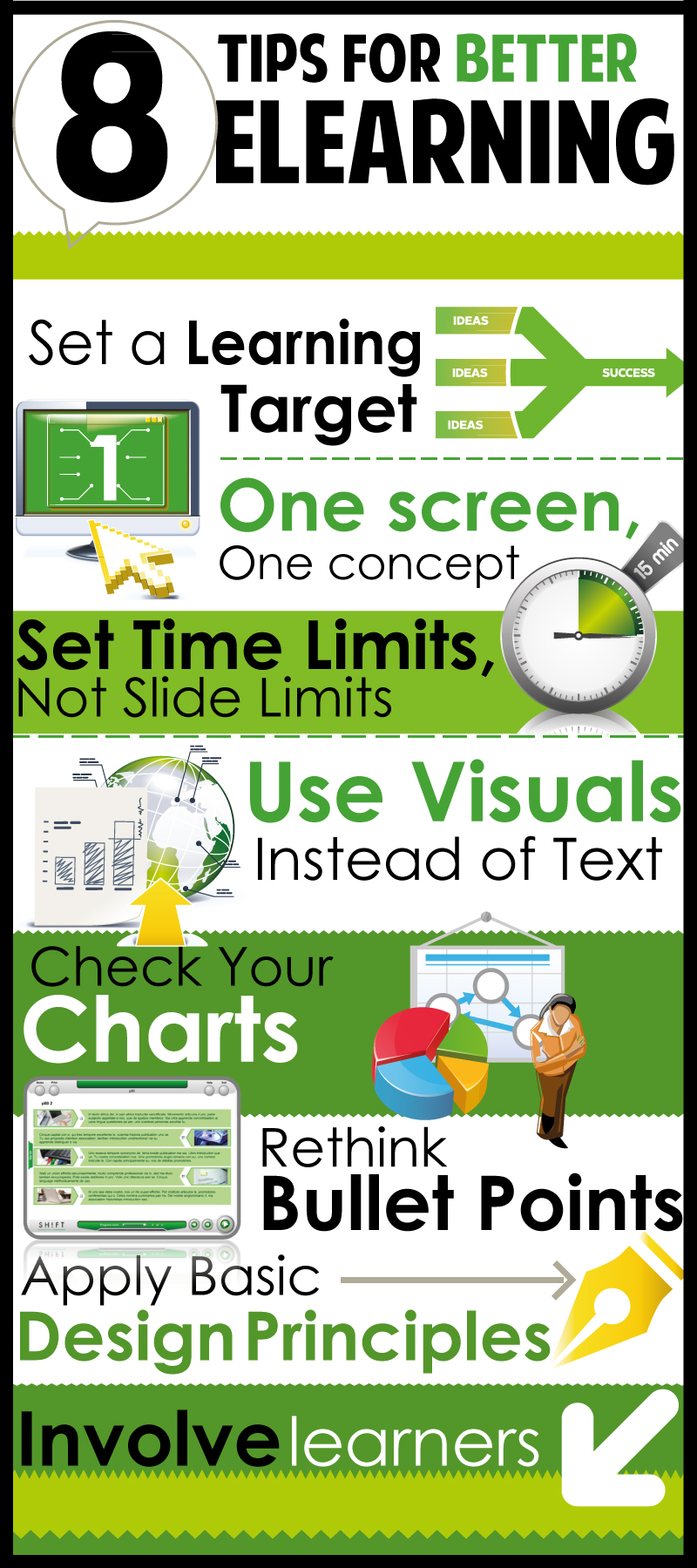As we all already know, the Internet has various uses for different aspects of our lives. We use it for entertainment, work and increasingly, school. I'm guessing you know what I am not-so-subtly trying to lead you into, the topic of the week: eLearning!
 |
| Hooray for eLearning! |
Let's begin with some information about eLearning with some handy charts (to skip, scroll down to the main point of the blog post, PROS&CONS ^^).
What's the difference between traditional classes and eLearning?
It's interesting to see that eLearning has become a significant part of education.
How should one go about with eLearning?
Guide to designing an eLearning program:
Okay, so that was pretty long. Now the main part! What would my blog post be without the traditional pros and cons segment?
 |
| Pros and cons coming right up! |
PROS:
- eLearning is convenient. In the case of an unforeseen circumstances, such as the 2003 SARS outbreak, schools might have to close for an indefinite period of time. To ensure that students do not waste their time at home and are able to catch up with their work, eLearning can be utilised. Its accessibility allows lessons to resume as per normal and assignments to be given accordingly, without compromising the safety and studies of the students.
- In the same thread, eLearning can be accessed anywhere as long as there is an internet connection. This means you can attend lessons and do work in the comforts of your own home.
- eLearning also provides flexibility. While there might be deadlines, students are able to complete their assignments based on their own time frames.
- To add on to point 2, students are able to pace their studies. Being online allows students to study content at their own pace. Faster learners can access the latest materials and study them in advance, while slower learners can take their time to understand older content, unlike a conventional classroom setting where the pace is set by the teacher.
- eLearning is also suitable for different learning styles. Some people might be visual learners, while others might be audio learners, for example.These groups of students can be catered to through the tools of eLearning, such as visual and audio materials.
- Environmentally-friendly. There is minimum waste of materials such as paper because now learning is done online.
- There is more content is available. Teachers are able to provide much more lesson materials on an eLearning platform by uploading them, due to the unlimited amount of space available. This facilitates learning as students are able to access a greater amount of resources that are useful to them.
- Elimination of barriers. Some students might be uncomfortable with face-to-face interactions with their teachers, so an eLearning platform provides a buffer that allows them to voice out their thoughts comfortably.
- Eliminating distractions from a classroom setting. One might be talking or passing notes in a traditional classroom. Going online helps to reduce these distractions.
- Being on the Internet makes one prone to distractions. While a classroom setting might be distracting, the internet has its own distractions too. One might wander away from the online learning platform when bored to surf the net, watch videos or use social media, just to name few. This hinders learning. Thus, one requires great self-discipline when going online.
- Less social interactions. While it is possible to interact with your peers online, it is not the same as face-to-face meetings where you and your friends can have a firsthand experience of interacting with each other. Emoticons are not as effective as real emotions.
- Looking at the computer screen for the whole day is not good. Being on the computer to attend lessons/do work requires a fair amount of time. One might have to sit in front of the computer for a few hours before everything is done, straining the eyes and confining the person to a sedentary position (like my current self writing this blog post). The time spent on learning is in addition to the time spent going online for leisure (an average of 13 hours per week, people!).
- To have access to eLearning, one obviously needs to have some form of technology. While most of us are a privilege lot, some people cannot afford certain technology for eLearning, such as iPads. Are schools going to deprive people of their education just because they are unable to pay for certain gadgets to "enhance learning"? In my opinion, using iPads seem kind of excessive as well. Why must one spend even more money to gain excess to knowledge that one can similarly do so in classrooms? This also brings us back to point 3, where the original purpose of technology could be diverted to other areas as a result of technology, such as gaming.
- Furthermore, computer/internet problems render eLearning ineffective too. Self-explanatory.
- Procrastination. With assignments being posted online, the option of doing work at one's own time is available. Thus, students might take the opportunity to push back their work with the belief that they still have time to do it. And we know how the story ends, because I believe everyone of us has some sort of similar experience before.
 |
| In summary, you might be better off sticking to the old school way of learning. Dinosaurs and babes are not really educational material. |
You can't do this...
Or this...
Or this...
Or even this...
All these are what makes school life memorable, and I would never trade it for the experience of facing a lifeless screen for a few hours. Friends make school more bearable. Signing off!














0 comments:
Post a Comment